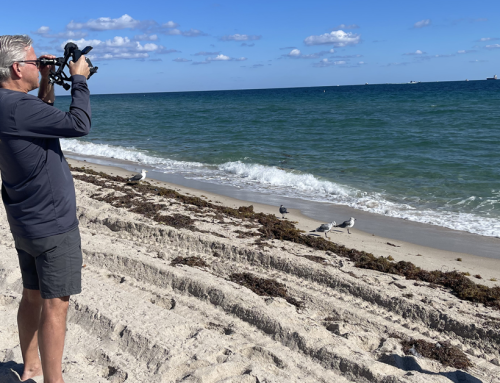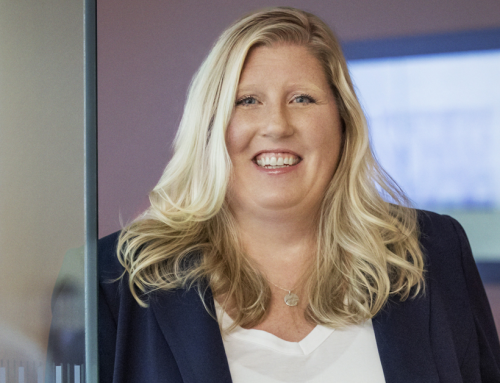How much money do you need? How much money do your clients need to retire? Can you ever have “enough” money?
“Enough” is a fascinating word because its definition is unique to each of us, and it is a moving target. Once we reach what we thought would be “enough,” we often realize that 15% more would probably be better.
It’s also hard to admit when we have enough because it leaves us with a nagging feeling that perhaps we’re quitters. Perhaps we’re just lazy and we “settle” when we hit that “amount” where we say “enough.”
Capitalism doesn’t help with our quest to find that mythical enough. Capitalism tells us that more is better, and we should pursue the “er” in life. It compels us to want to be richer, prettier, stronger, thinner, and younger, and buy the stuff that’s bigger, fancier, costlier, and flashier.
And of course, we have the Joneses. We can never have enough because, well, look at the Joneses.
But what if we shift our paradigm from there is never enough and more is better to one where we live in sufficiency?
Buckminster Fuller
Sitting in an auditorium with 2,000 people in 1976, Lynne Twist was mesmerized by the “little bald man with thick glasses in his eighties” at the front of the stage.
By that time, Buckminster Fuller was a highly-regarded—and controversial—designer, author, and inventor.
Lynne shared with me that Fuller spoke about how humanity had crossed a threshold where we were now doing so much more with so much less. And this meant that there is enough for everyone everywhere to have a healthy and productive life.
Listen to My Podcast With Lynne Twist
Fuller explained that humanity was moving FROM a mindset of scarcity, that there’s not enough to go around and someone’s always going to be left out, TO the other side of this threshold where there’s enough for everyone, everywhere to have a healthy and productive life.
And in this new world, the paradigm is not scarcity, it’s sufficiency. It’s a world where you and I can both make it at no one’s expense. So, we go from a you OR me paradigm to a you AND me paradigm.
Fuller went on to say that day in 1976 that he was not talking about an amount of anything. When he talked about sufficiency and enough, he was talking about a way of being. And then he capped it off by saying we will not realize this for 50 years.
Why 50 years?
It would take 50 years because humanity’s institutions were rooted in a you OR me scarcity paradigm and we’d need 50 years for them to become so dysfunctional that they will no longer be repairable. And from the demise of this old paradigm would spring a new paradigm, a you AND me paradigm where there is enough for everyone everywhere to have a healthy and productive life.
Fifty years from Fuller’s talk puts us in 2026. And while Fuller liked to talk in long sweeps of time, he was prescient as recent years have clearly shown a cracking of institutions and massive dysfunction in various realms of life.
Could we be on the cusp of realizing Fuller’s vision for humanity?
Transformation According to Lynne Twist
Realizing Fuller’s vision requires not just change, but transformation.

Lynne Twist: Transformation can come from anything, a conversation, a moment, a realization. It can come from standing next to a tree and having an insight probably coming from the tree and realizing, I think that came from the tree.
Lynne says,
Change requires you to make something wrong so that you make something new. In other words, change requires insulting something, insulting the past or insulting the present, to motivate you to do something different.
By contrast,
Transformation never insults the past or the present. It completes it. It suddenly makes sense. When you have a transformation, it’s often a revelation or a realization. It’s often a step into another level of consciousness that never goes back. And in this moment of revelation and transformation, we stand on the shoulders of what came before rather than think there’s something wrong with what came before.
Now, what does all this have to do with money?
Everything!
When we’re stuck in a scarcity based, you OR me money paradigm, we grip money tightly and constrain its ability to flow. We live in fear that, as Lynne says, “there’s never enough and more is better.”
Imagine for a moment if we transformed our relationship with money to view money as a flow. As something that moves in and out of our life while providing nourishment along the way to everything it touches.
Instead of hoarding money, of accumulating it to try to soothe our fear of running out, what if we changed our mindset, our paradigm to one where there is enough for everyone everywhere to have a healthy and productive life?
Money hoarded becomes stagnant; it rots, decays, and atrophies. Money in motion regenerates; it purifies, nourishes, and expands all that it touches.
What if we had a reciprocal relationship with money in which we viewed it as flowing freely TO us and THROUGH us. Instead of stocking up on money, we become a conduit for its flow.
In a similar way, the great investor John Templeton was once asked what his greatest investment was. His response, “Tithing.” How’s that? Because the more he gave way, the more that came back to him.
With this transformational mindset, clients would no longer need to ask, “Do I have enough money to retire.” Rather, they would come to you from a deep knowing that there is enough for everyone everywhere.
And as Fuller said nearly 50 years ago, this won’t happen until there’s a breakdown of old institutions and a buildup of new ones. Until there’s a shift in consciousness, a transformation from a “you or me” world to a “you and me” world.
As a financial professional, you can be a catalyst for this transformation. Are you in?





